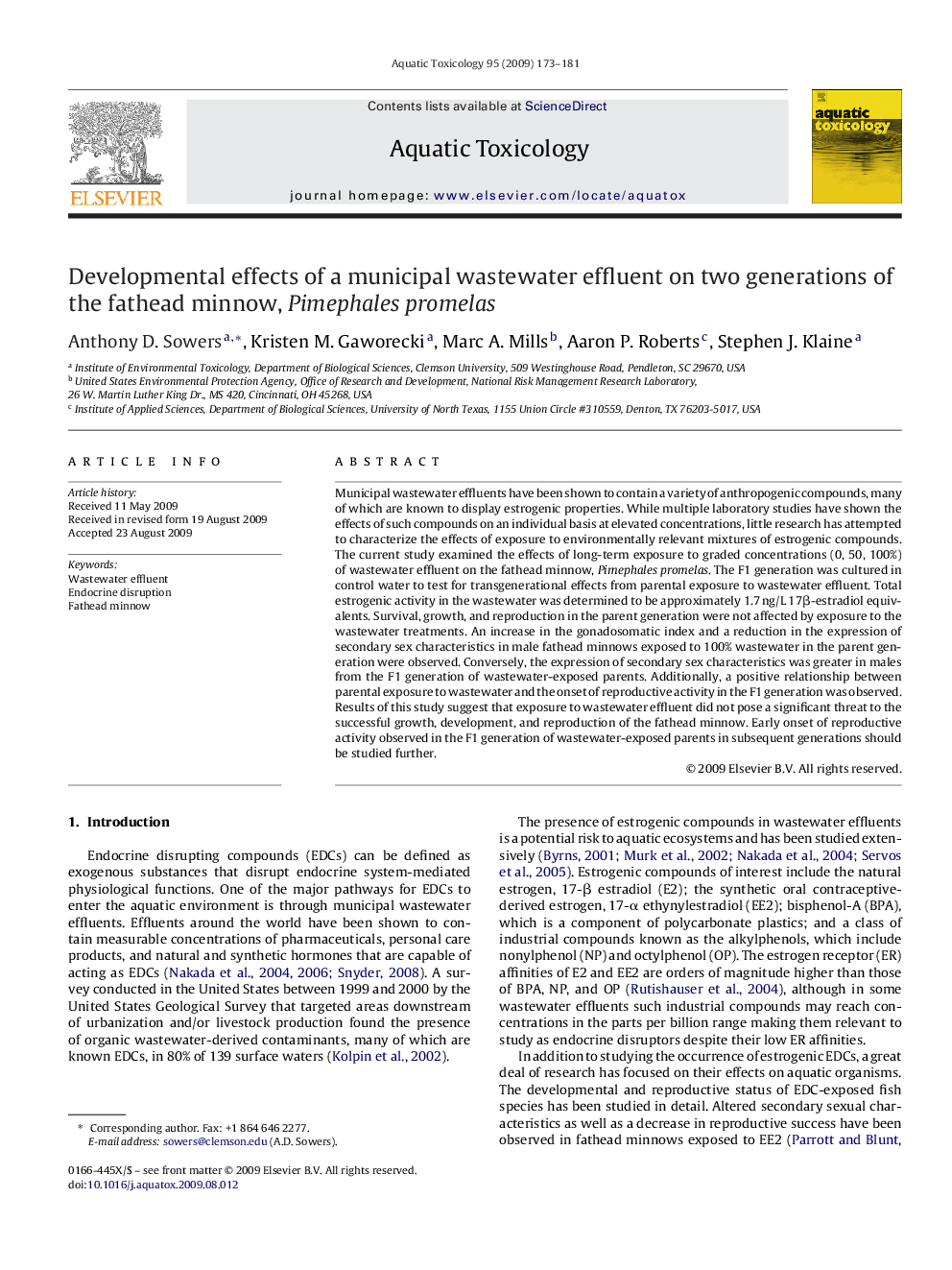| Article ID | Journal | Published Year | Pages | File Type |
|---|---|---|---|---|
| 4530573 | Aquatic Toxicology | 2009 | 9 Pages |
Municipal wastewater effluents have been shown to contain a variety of anthropogenic compounds, many of which are known to display estrogenic properties. While multiple laboratory studies have shown the effects of such compounds on an individual basis at elevated concentrations, little research has attempted to characterize the effects of exposure to environmentally relevant mixtures of estrogenic compounds. The current study examined the effects of long-term exposure to graded concentrations (0, 50, 100%) of wastewater effluent on the fathead minnow, Pimephales promelas. The F1 generation was cultured in control water to test for transgenerational effects from parental exposure to wastewater effluent. Total estrogenic activity in the wastewater was determined to be approximately 1.7 ng/L 17β-estradiol equivalents. Survival, growth, and reproduction in the parent generation were not affected by exposure to the wastewater treatments. An increase in the gonadosomatic index and a reduction in the expression of secondary sex characteristics in male fathead minnows exposed to 100% wastewater in the parent generation were observed. Conversely, the expression of secondary sex characteristics was greater in males from the F1 generation of wastewater-exposed parents. Additionally, a positive relationship between parental exposure to wastewater and the onset of reproductive activity in the F1 generation was observed. Results of this study suggest that exposure to wastewater effluent did not pose a significant threat to the successful growth, development, and reproduction of the fathead minnow. Early onset of reproductive activity observed in the F1 generation of wastewater-exposed parents in subsequent generations should be studied further.
